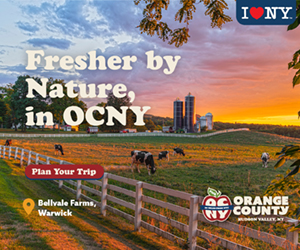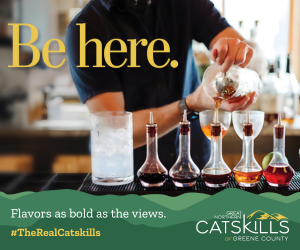Eating local produce and food is a powerful movement for the foodie community, and drinking alcohol beverages from craft producers is certainly not excluded from eating local. The ability to form a connection with a local distiller, winemaker, or brewer while enjoying their craft is an incredible experience for the consumer and helps create an intimate relationship between farm and table. But what goes into crafting these local beers, wines, and spirits?
In the beverage alcohol world, there is no formal definition of what constitutes “local.” In New York State, however, there are laws that separate larger distilleries, breweries, and wineries from farm or micro distilleries, breweries, and wineries. The designation “farm” generally implies two things: (1) the producer may be located on a farm in New York (generally true for farm wineries); and (2) they tend to have a smaller scale production.
Still, “farm” has another important meaning in New York: to be eligible for a farm alcohol manufacturer license, the licensee is required to source a certain amount of ingredients from New York. The percentage of ingredients depends on the commodity, as outlined below:
1. For farm wineries, wine must be produced from 100% grapes, fruits, or agricultural products grown or produced in New York State.
2. Farm breweries are required to use 20% of their hops and 20% of all other ingredients from New York State, but the amount for both hops and all other ingredients is planned to increase to 60% each in 2019 and 90% each in 2024.
3. Farm or micro distilleries must produce liquor “primarily” from farm or farm products (which are considered to be fruits, vegetables, grain, honey, maple sap, and other agricultural products). “Primarily” has been interpreted to mean at least 75% by volume.
In the 1800s, New York was actually the top producer of hops in the U.S., but the combination of a mildew epidemic and Prohibition ravaged the industry for several decades. The growth of farm brewers, in tandem with improved pest management options, has helped regenerate the state’s hop industry. Several apple orchards—a competitive business in what some believe may be an over-saturated market—are even converting to hop farms to supply hops to the increased number of farm brewers in the state. Hop farms have also become increasingly attractive because of the higher prices New York hops are said to obtain at market, due in part to the state’s soil characteristics.
On the other end of the spectrum, New York distillers also experienced an extreme setback during Prohibition, an impediment that also took decades for both the law and producers to recover from. Today, the state’s alcohol laws favor a distilling economy and encourage the use of local crops. Farm distillers receive perks, such as significantly reduced license fees and the ability to operate a tasting room, if they source local products.
At this point, there’s really no reason not to use New York ingredients. In fact, many of these “farm” producers have taken advantage of their livelihood as farmers and use agricultural products grown entirely on their properties. Bryan Ensall, co-founder of Orange County Distillery in Goshen, entered the industry with the idea he and his partner would source their own ingredients. The pair distills vodka, whiskeys, and scotches from vegetables—such as sugar beets and corn—and botanicals they grow and harvest on their property. “Because we grow our own ingredients, we have flexibility; we can grow a lot and keep leftover in storage for future batches. We don’t have to rely on a supplier and we find this model more feasible for our business.”
Some local distillers have even found that terroir—a French term generally associated with wine, meaning a taste or flavor conveyed to the wine because of soil, topography, and climate—extends to production of spirits with local grains. As Danielle Eddy of Hillrock Estate Distillery explains, “Jeff Baker, Hillrock’s owner, always had an inclination you do terroir with whiskeys. And he was right—our whiskeys have distinct flavors of clove and cinnamon, which are innate to the Hudson Valley’s land. This helps make our whiskeys distinguishable, with their unique flavor characteristics.” Hillrock, like Orange County Distillery, also grows all of the ingredients found in its whiskeys and ryes right on its estate. Still, Danielle adds that this very distinct terroir found in Hillrock’s whiskeys helps creates a very localized perception of the product and helps the consumer connect with the land and the distiller.
Peggy Schwartz, owner of Town & Country Liquors in Saugerties, remarks that there are certainly a couple of trends with consumers who come into her store. “Right now, it’s not only that people want to be on the trend, drinking different wines and liquors with friends, but they want to have greater involvement and a greater connection with the producer and the product—they are excited to experience all of this, the craft and the mastery behind local production, and they want to share it. There is so much artistry now in local production.” She mentions that many customers will come in and ask for specific brand names, but they will also ask for recommendations. “People are excited when you recommend the small, local products,” she says. “It’s like being a foodie—you really enjoy the whole experience from smelling, savoring, tasting, and conversing about the product. They want to be part of the entire movement.” With laws supporting economic growth, it seems only probable that New York’s beer, wine, and spirit movement will continually grow, expand, and succeed.





